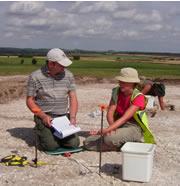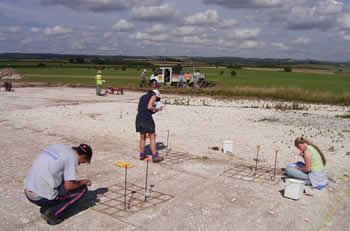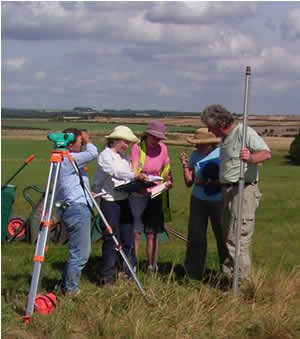 Archaeological recording was the main task of the day. Once they had excavated their features, course participants began the task of recording what they had dug.
Archaeological recording was the main task of the day. Once they had excavated their features, course participants began the task of recording what they had dug.
This involved learning new skills such as technical drawing, planning, surveying and filling in context sheets. These are all methods used by archaeologists to gain and record as much information as possible. Since any excavation is in fact a form of destruction, it is essential that one form of evidence - the soil/objects in the ground, is replaced by another - the written and illustrated record left for future generations to study.
In the afternoon Chris Stevens, an environmental archaeologist from Wessex Archaeology, led a workshop about geoarchaeological techniques. This included explanations as to how archaeologists are able to recreate entire landscapes and environments from the soil samples they take during excavation.
 |  |